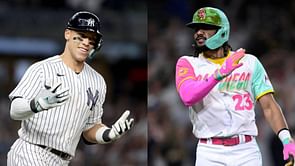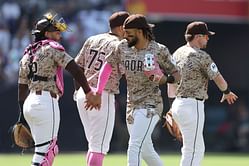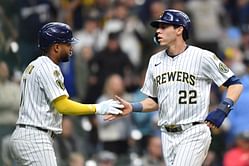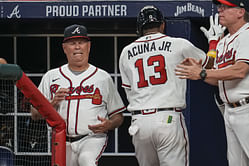
Baseball is more than just a sport; it is a game steeped in history, traditions, and unwritten rules. Each aspect of the game, from players' stances on the field to their jerseys, holds significance. Since its inception in the late 1800s, Major League Baseball (MLB) has evolved into one of the world's most beloved professional sporting leagues.
Teams frequently make choices regarding the number of signed numbers based on availability and longstanding customs. Certain numbers are handed down through team legacies, while others remain off-limits as they belong to legendary figures whose numbers have been retired. Coaches and managers may assign jersey numbers considering a player's position, tenure with the team, or simply what’s open at their time of joining. Players often identify strongly with their assigned numbers; some numbers attain such iconic status that they are officially retired and can never again be donned by another athlete from that franchise.
Baseball player numbers
Baseball player numbers are generally assigned based on a mix of tradition, position, and availability. Traditionally, lower numbers have been allocated to starting players in vital roles such as pitchers and catchers. For instance, Babe Ruth famously wore No. 3 due to the Yankees’ numbering system that followed the batting order; he was the third hitter. In contrast, higher numbers were typically reserved for backup players or those joining the roster later in the season. Nowadays, Major League Baseball teams no longer assign numbers solely by traditional approach.
In many instances, athletes can select their numbers, particularly if they are established veterans or star players. For some individuals, this selection carries significant personal meaning. Derek Jeter wore No. 2 for the Yankees since it was the last available single-digit number then, and it became legendary over time. Others choose digits as a tribute to former athletes, family members, or even out of superstition.
Additionally, teams often retire jersey numbers in honor of iconic figures from their history which restricts options for current players. Certain numbers, like Jackie Robinson’s No. 42, are retired throughout all of Major League Baseball.
What team has the most retired numbers?
The New York Yankees have retired the most numbers across Major League Baseball, with 21 numbers retired in honor of 22 players and managers.
Here’s a list of numbers retired by New York Yankees:
| Player Name | Position/Role | Number | Date Retired |
| Billy Martin | 2B/Manager | 1 | August 10, 1986 |
| Derek Jeter | SS | 2 | May 14, 2017 |
| Babe Ruth | RF | 3 | June 13, 1948 |
| Lou Gehrig | 1B | 4 | January 6, 1940 |
| Joe DiMaggio | CF | 5 | April 18, 1952 |
| Joe Torre | Manager | 6 | August 23, 2014 |
| Mickey Mantle | CF | 7 | June 8, 1969 |
| Yogi Berra | C/Manager | 8 | July 22, 1972 |
| Bill Dickey | C | 8 | July 22, 1972 |
| Roger Maris | RF | 9 | July 21, 1984 |
| Phil Rizzuto | SS | 10 | August 4, 1985 |
| Thurman Munson | C | 15 | August 3, 1979 |
| Whitey Ford | LHP | 16 | August 3, 1974 |
| Jorge Posada | C | 20 | August 22, 2015 |
| Don Mattingly | 1B | 23 | August 31, 1997 |
| Elston Howard | C | 32 | July 21, 1984 |
| Casey Stengel | Manager | 37 | August 8, 1970 |
| Jackie Robinson | - | 42 | April 15, 1997 |
| Mariano Rivera | RHP | 42 | September 22, 2013 |
| Reggie Jackson | RF | 44 | August 14, 1993 |
| Andy Pettitte | LHP | 46 | August 23, 2015 |
| Ron Guidry | LHP | 49 | August 23, 2003 |
| Bernie Williams | CF | 51 | May 24, 2015 |
FAQs on baseball player numbers
A. Yes, players can change their numbers, but they must follow team protocols. This often involves notifying the team management and updating merchandise.
A. Retiring a player's number means that the team will no longer allow any player to wear that number, honoring the player's contributions and legacy within the organization.
A. The New York Yankees have the most retired numbers in MLB, with 21 numbers honoring 22 players and managers.
A. Players on different teams can wear the same number, but no two players on the same team can wear the same number during the same season.
A. Generally, retired numbers are not reused, as they are meant to honor the legacy of the player. However, some teams may make exceptions under special circumstances.









